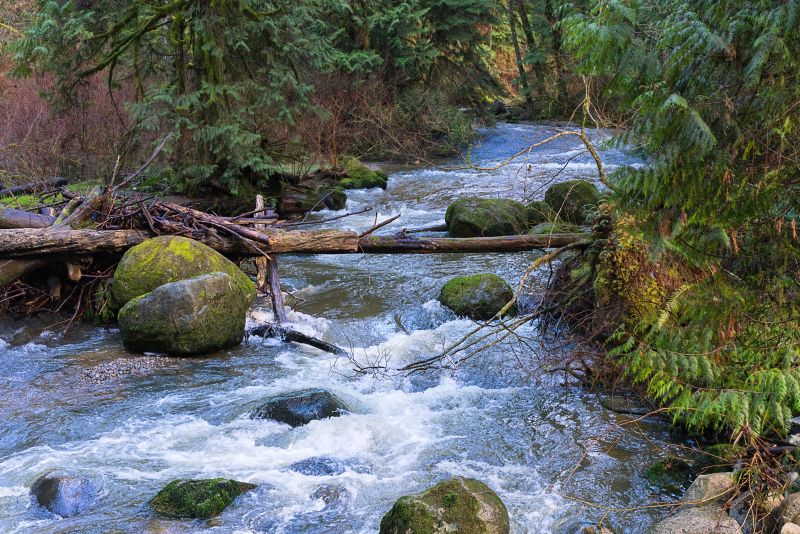The Potential Impact of Hydraulic Fracturing on Streams
Published on by Water Network Research, Official research team of The Water Network in Academic
“Fracking” operations could have impacts on water quantity because they are withdrawing these large amounts of water from nearby streams, which house aquatic ecosystems and are used by people for drinking and recreation.

Stream, representative image, source: Good Free Photos
On average, more than 5 million gallons of freshwater is used to fracture one gas well in the U.S. That’s more than enough to fill seven Olympic-size swimming pools. Small streams are a major source of water for these operations. Some of these streams also provide drinking water for communities and homes for species with already declining populations.
However, little is known about the amount of water that can be sustainably withdrawn from these sources. Sally Entrekin and colleagues wanted to flesh out this picture for the Fayetteville Shale play, an active gas field in Arkansas where more than 5,000 gas wells were drilled using fracking techniques between 2004 and 2014.
The researchers estimated the water stress that hydraulic fracturing might place on streams in the gas field based on water usage and timing for fracturing wells and data on nearby stream flow rates. The streams in the area studied help supply drinking water to thousands of people in the region and are home to 10 aquatic species that are declining at a concerning rate.
The team’s calculations revealed that freshwater usage for fracking could potentially affect aquatic organisms in 7 to 51 percent of the catchments, depending on the month. If 100 percent of the wastewater were recycled, the potential impact drops, but 3 to 45 percent of catchments could still be affected. The researchers conclude that improved monitoring and access to water withdrawal and streamflow data are needed to ensure protection of streams as drinking water sources and valuable habitat in the future.
The authors acknowledge funding from the Science for Nature and People Partnership (SNAPP), a collaboration of The Nature Conservancy, the Wildlife Conservation Society and the National Center For Ecological Analysis and Synthesis (NCEAS) at the University of California Santa Barbara.
The American Chemical Society is a not-for-profit organization chartered by the U.S. Congress. ACS is the world’s largest scientific society and a global leader in providing access to chemistry-related research through its multiple databases, peer-reviewed journals and scientific conferences. ACS does not conduct research, but publishes and publicizes peer-reviewed scientific studies. Its main offices are in Washington, D.C., and Columbus, Ohio.
Source: ACS
Media
Taxonomy
- Contaminant Removal
- Hydrology
- River Studies
- Contaminant Movement Mapping
- River Engineering
- Fracking
- Hydrology
- Hydrological Modelling
- Fracking Technology